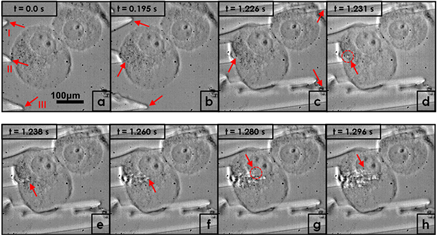Freezing can kill cells and is widely used in cryotherapy. In clinical applications the mechanisms of the cryoinjury around the ice periphery need thorough understanding. On the other hand intracellular ice formation (IIF) plays an essential role in cell cryoinjury. The biophysical mechanisms of IIF have been studied for several decades but are still under debate, which inhibits the development of cryotherapy. Our work includes the investigations of the relationships between IIF and the cell membrane, IIF in a controlled osmotic solution and cell damage by IIF. Our work has generated a fundamental understanding of the biophysical mechanisms behind IIF. Comprehensive observation of cell freezing process including the location of the initiation site, the growth rate and the ice dendrite morphology have been achieved and the relationship between IIF and cell membrane integrity is well understood. Prof. P. Mazur, a leading scholar in cryobiology, emailed Dr. Wang and he described the research achievement as a “very nice paper”.
This work received the Grand Prize of Challenge Cup of Peking University (Fundamental Research).
In Figure 1 continuous recording of several important IIF processes have been demonstrated on a novel lab-on-a-chip platform, including the extracellular ice crystal penetrating through the cell membrane, and the intracellular ice crossing the nucleus membrane.
In Figure 2 it was found that in the high freezing rate region (>20oC/min) cell membrane was disrupted after IIF occurred. In the low freezing rate region (<20oC/min), however, cell membrane could keep its integrity even though IIF had occurred, implying that IIF is not the consequence of the membrane disruption. These IIF-but-intact cells could have IIF again in the subsequent freezing cycle, but the extracellular to intracellular ice penetration became easier.
 Figure 1
Figure 1
 Figure2
Figure2